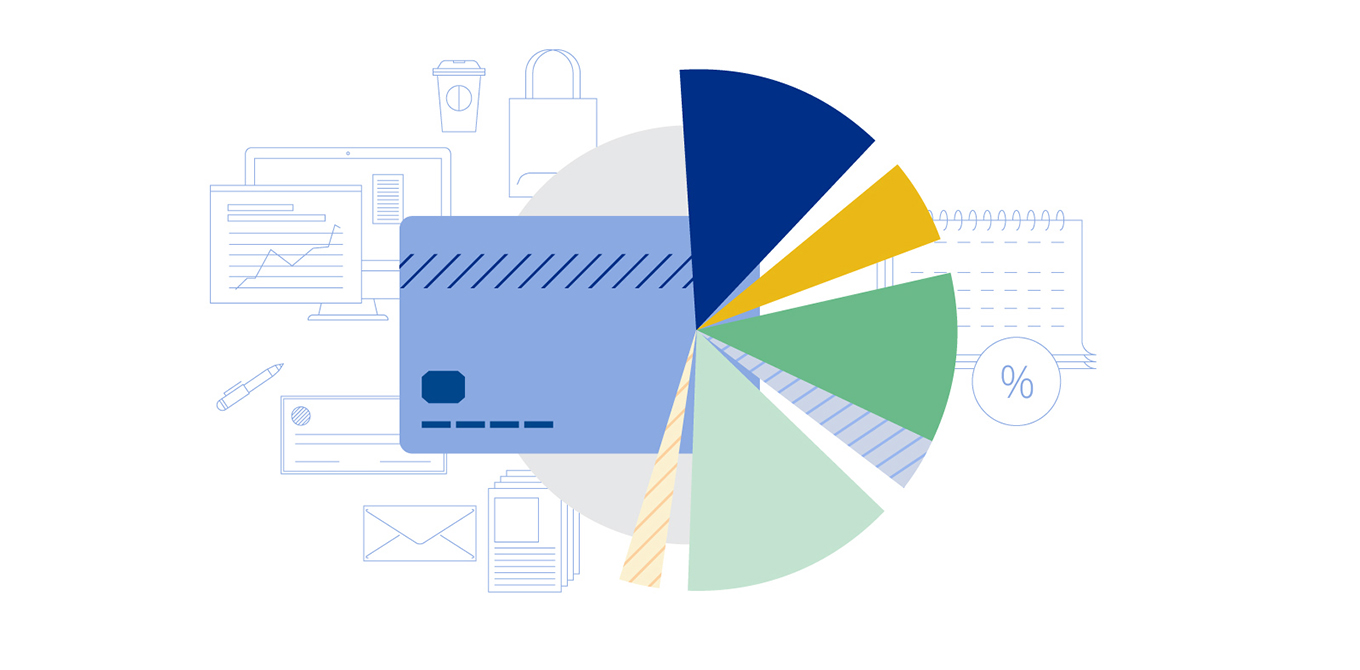How to pick the right credit card for you
Credit cards can be a useful tool and are part of most consumers' financial lives. But deciding which cards to use and how they can benefit you can be a bit overwhelming. In addition to providing access to credit, many cards offer cash back, travel rewards, and the ability to secure transactions from fraud, theft, and unexpected events.
Savvy users find ways to get the most from their cards without falling into some of their spending traps. You can, too, when you're intentional with how you use them. All you need is a little bit of strategic thinking.
What is a credit card strategy?
Many consumers may not have thought about creating a personal credit card strategy. Put simply, the idea is to figure out how credit cards can work best for you and your financial situation to help you achieve your goals. How can you maximize the benefits while avoiding the fees? And which credit cards can help you get there?
Your goal might be to take more family vacations so your strategy could include making routine purchases on your credit card to earn travel rewards. If you want to pay down credit card debt, your strategy could be to use an introductory rate offer for a balance transfer. Or maybe you want to renovate your house in the next year so you use an introductory cash-back incentive to lower the cost of supplies or appliances and pay off the balance with savings. There are various strategies you could employ for each scenario, but the important thing is that the strategy fits your budget, is realistic, and will help you achieve your goal.
Build your strategy around your finances
Before you jump into credit card applications, spend some time reviewing your entire financial picture. Look at how much you owe, if you have any outstanding debts, and your current debt-to-income ratio. Expenses such as student loans, car loans, and your monthly mortgage or rent should be taken into account. Reviewing your budget will give you a clearer idea of how you could use your credit card.
After taking a closer look, you may decide to consolidate some of your high-interest debt by transferring it onto a low-interest credit card. Or you might choose to use your store card throughout the year to rack up cash-back bonuses that will fund holiday gifts.
Your strategy should always include a plan to pay off the balance, whether that's all at once or in monthly installments. Be mindful of payment deadlines, interest rate increases and late fees so you can avoid the costlier aspects of credit card use.
As you build your strategy, you'll want to understand the different types of credit cards available to most consumers.
Traditional credit cards vs. store cards
Both types of credit cards can offer you a variety of benefits. And they also offer the opportunity to rack up fees and interest. Make sure you understand the differences when building them into your strategy.
Traditional:
Consumer credit cards are issued by banks or financial institutions and usually use Visa® or MasterCard® payment networks. Consumers will apply and get approved based on a variety of factors that the lender considers important. These factors may include, but aren't limited, to the following:
- Credit score—If you're not sure what your credit score is, you can request a free copy of your credit report once a year from each of the major credit bureaus. The higher your score, the more favorable the lending terms.
- Debt-to-income ratio—Lenders use this information to assess your ability to repay your debt.
- Credit requests— Numerous credit requests may be a red flag to a lender as it could indicate that you're having financial difficulties.
Traditional credit cards are useful in that they are accepted by a variety of vendors locally and abroad. These cards sometimes provide basic purchase protections that can benefit the credit card holder when a purchase goes sour or when items are stolen or damaged.
Store:
Store cards are very similar to a bank credit card, the one major difference is that these limited use cards are often only accepted at the designated retailer. We’ve all been asked at check-out of a retailer if we want to apply for a store card to receive a discount. For example, if you love shopping at a specific clothing store and apply for their card, you typically can only use it at that particular store or associated chains. If you do use them as part of your credit card strategy, be aware that store credit cards can often carry higher interest rates than bank cards.
Things to consider before applying for a credit card
Now that you know the difference between traditional credit cards and store credit cards and have reviewed your budget, there are some additional pieces of information to consider.
Which credit cards will work best with your typical spending habits and budget? If you're commuting daily, then perhaps a gas card that gives you a discounted price per gallon at your local gas station would work well for you. Do you regularly buy gift cards? Perhaps you could find a card that offers gift cards as part of their points program.
What's your payment plan? Will you pay your card in full at the end of each month or carry a balance (paying at least the minimum payment)? If you're able to pay your balance in full at the end of each month, that's a great strategy. But, sometimes that's not possible. If you carry a balance, your card's interest rate will make the debt more expensive.
Know your card's current — and future — APR (Annual Percent Rate). Some cards have introductory rates that increase after a specific period of time. Make a note of that deadline to ensure you avoid charges down the road. Also, the rate can increase based on your cardholder agreement and whether you're making payments on time. Sometimes lenders charge different APRs depending on whether you're using the card for a purchase, a cash advance, or a balance transfer.
Calculate your credit utilization rate and try to keep it at or below 30%. This number can impact your credit score, which affects the kinds of offers you get. To figure it out, divide your overall card balance by the total amount of credit available to you. Here's a quick example:
- If you have one card with a $500 balance and a $1,000 limit, then you're using 50% of your credit. If you have two cards with limits of $1,000 each and use $300 on one and $200 on another, then you've used 25% of the credit available to you. Either way, you still owe $500, but one credit utilization score is better than the other.
That said, don't go out and apply for a bunch of cards simply to improve your utilization score. Here are a few questions to ask yourself about the number of credit cards you currently hold:
- Do you have so many credit cards that you're unable to keep up with the important details? Things like how much you owe, the APR of each card, when your monthly payment is due, and other important details needed to successfully manage your account.
- Do you owe more than you make? The Consumer Financial Protection Bureau noted that 43% is the maximum debt-to-income ratio that consumers should be managing on a monthly basis. This means you owe no more than 43% of your income. For example, if you make $6,000 per month, you shouldn't owe more than $2,580 in monthly debt payments, including your mortgage, car insurance, health care premiums, etc.
Yes, credit cards can work for you, as long as you pay attention to the details and make conscious decisions about your spending and payoff strategy.




